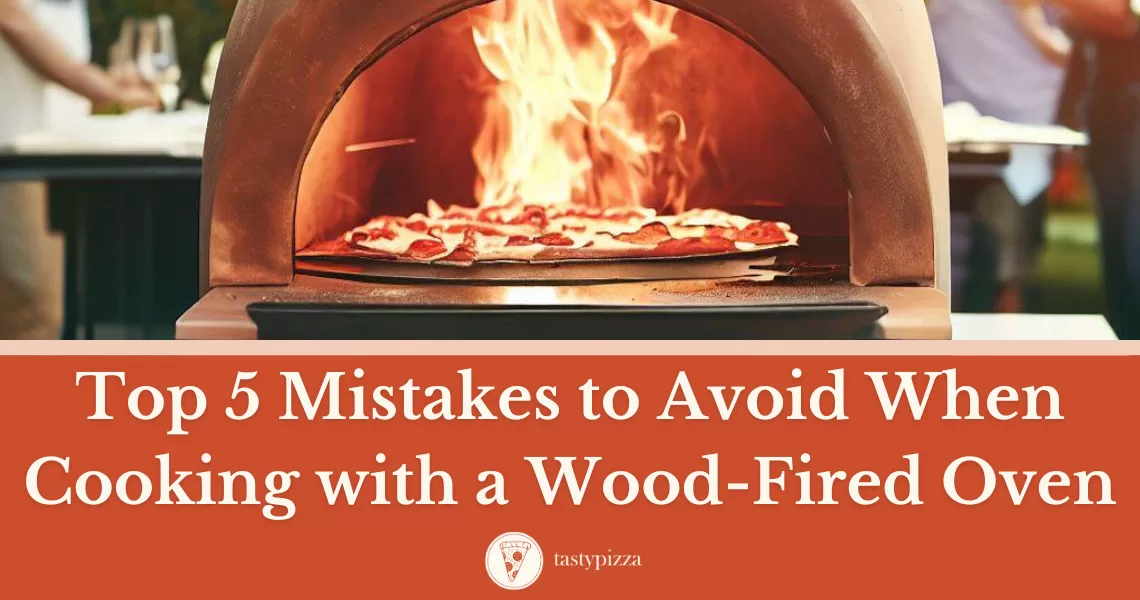Are you a home cooking enthusiast or outdoor entertainer who loves the rustic charm of cooking with a wood-fired oven? Before you fire it up for your next pizza party, make sure you avoid these common mistakes that can ruin your culinary masterpieces and leave your guests disappointed.
There’s something magical about cooking with a wood-fired oven – the enticing aroma, the smoky flavors, and the joy of creating artisan-made pizzas and delectable dishes.
However, achieving perfection with a wood-fired oven requires more than just tossing in the ingredients and letting the fire do its thing. In this blog post, I’ll share five crucial mistakes that many wood-fired pizza oven users make and offer expert solutions to elevate your wood-fired cooking game.
Table of Contents
ToggleMistake 1 – Neglecting Proper Preheating
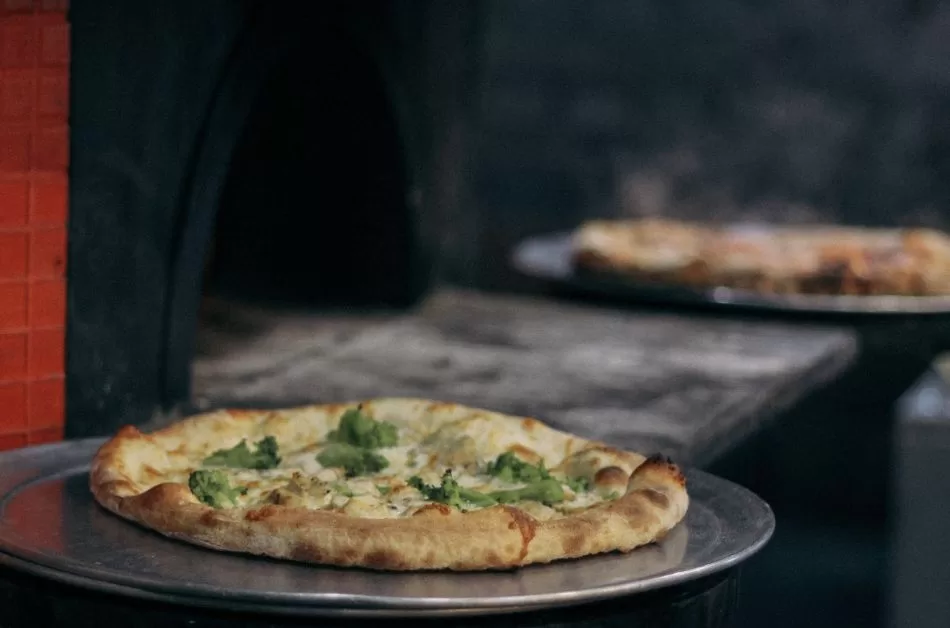
Importance of Preheating
Properly preheating your wood-fired oven is the foundation of successful wood-fired cooking. Preheating ensures that the oven reaches the ideal temperature for that crispy crust, gooey cheese, and smoky flavor we all love.
Common Preheating Errors
- Rushing the Preheating: One of the most common mistakes is not giving the oven enough time to reach the desired temperature. This impatience can lead to undercooked or unevenly cooked dishes.
- Neglecting the Oven Dome: Some users focus only on the cooking surface, forgetting that the dome also needs to reach the right temperature for optimal heat distribution.
- Using Inaccurate Temperature Gauges: Reliance on inaccurate or cheap oven thermometers can lead to cooking at the wrong temperature, resulting in disappointing outcomes.
Preheating Tips and Techniques
To achieve the perfect preheat, follow these steps:
- Use Dry, Natural Hardwoods: Start with quality hardwoods like oak, cherry, or apple wood. Avoid semi-dried or damp wood as it can produce excess smoke and uneven heat.
- Start the Blaze: Ignite the fire with the right techniques, and ensure the flames evenly cover the oven floor and dome.
- Monitor Heat Progression: Use an infrared thermometer to gauge the temperature of the cooking surface and the dome, ensuring they reach the desired levels.
- Allow for Ample Preheating Time: Depending on the size of your oven, preheating may take anywhere from 30 minutes to an hour. Exercise patience for the best results.
READ ALSO: The Top Picks of Wood-Fired Pizza Ovens
Mistake 2 – Using the Wrong Wood
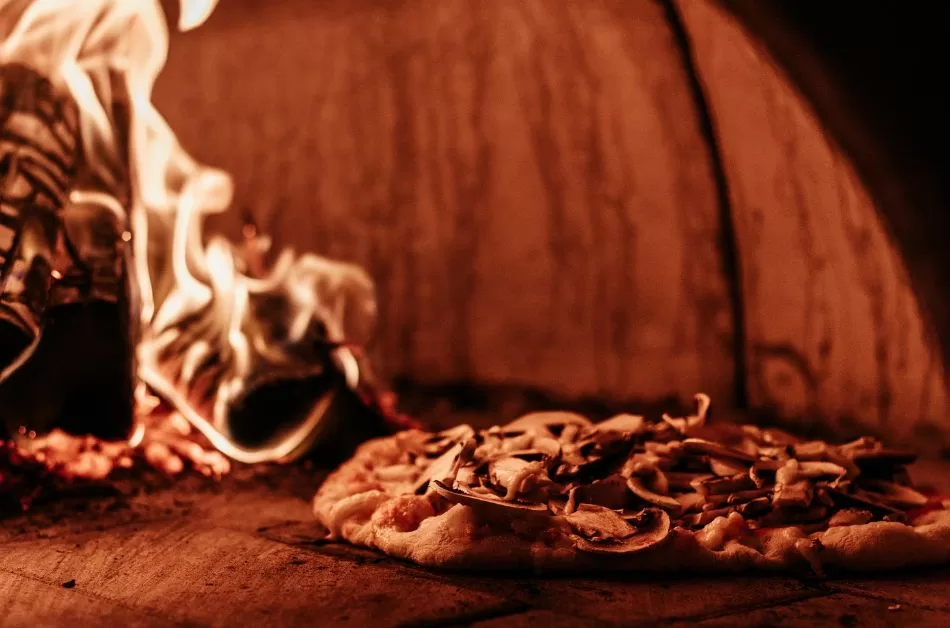
Understanding Wood Selection
The type of wood you use significantly impacts the flavors of your wood-fired dishes. Each wood imparts a unique taste and aroma, making wood selection a crucial factor in your culinary adventures.
Inappropriate Wood Choices
- Softwoods and Treated Woods: Avoid using softwoods like pine or treated woods, as they release harsh chemicals and unpleasant flavors when burned.
- Unseasoned or Green Wood: Green wood contains excess moisture, leading to excess smoke and poor heat distribution.
Best Wood Options for Different Foods
- Fruity Flavors: Opt for fruitwoods like apple or cherry to add a sweet, mild flavor that complements pizza and dessert dishes.
- Robust and Earthy Tastes: Dense hardwoods like oak provide a hearty and smoky flavor, ideal for meat dishes and robust pizzas.
When selecting wood, remember that the wood should be dry, seasoned, and free from any chemicals. Ensure you source your firewood from reputable suppliers.
DON’T MISS: our review of Westinghouse Pizza Oven
Mistake 3 – Overloading the Oven
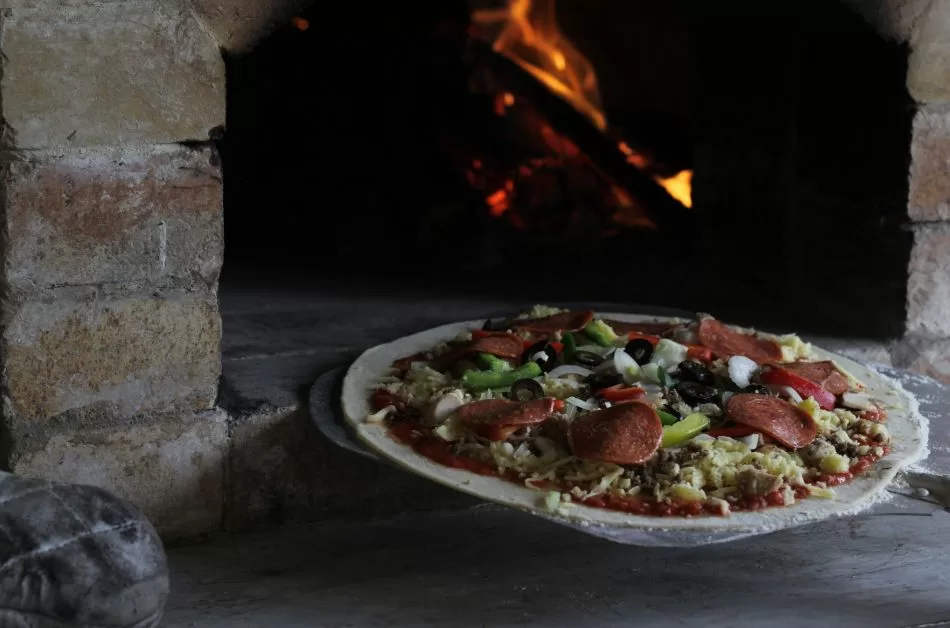
The Consequences of Overloading
It’s tempting to pack the oven with multiple dishes during gatherings, but overcrowding can lead to uneven cooking and lackluster results.
Optimal Food Placement
- Leave Space for Airflow: Arrange dishes with enough space between them to allow hot air to circulate evenly.
- Place Nearest the Flame: Foods that require more intense heat, like pizzas, should be placed closer to the flame source.
- Use Oven Accessories: Invest in quality pizza peels and tools to help you maneuver dishes without burning yourself.
Batch Cooking Techniques
- Timing is Key: Plan your cooking to ensure dishes are ready to be cooked one after the other without any waiting time.
- Use Warm Plates: Preheat plates to keep the cooked dishes warm while you finish preparing others.
Mistake 4 – Neglecting Temperature Management
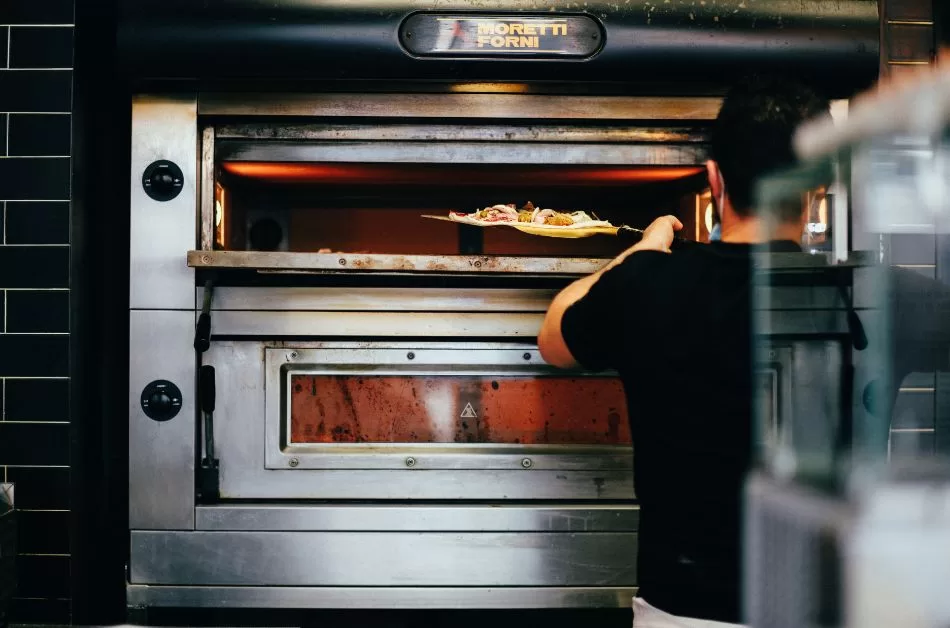
The Importance of Temperature Control
Controlling the temperature in your wood-fired oven is crucial to achieving the desired cooking results, whether you’re making pizza, bread, or roasted dishes.
Thermometer Reliance
While oven thermometers can be helpful, they are not always 100% accurate. Relying solely on them might lead to undercooking or overcooking.
How to Adjust Temperature in a Wood-Fired Oven
- The Art of Reading the Fire: Develop your skills in reading the flames and embers to gauge the oven’s temperature. A deeper red glow indicates higher heat, while a pale orange suggests lower heat.
- Using a Heat Gun: A non-contact infrared thermometer gun can be a useful tool to measure the temperature of the oven floor and dome accurately.
MAKE SURE: you read another in-depth review of Alfa One Pizza Oven
Mistake 5 – Ignoring Proper Oven Maintenance
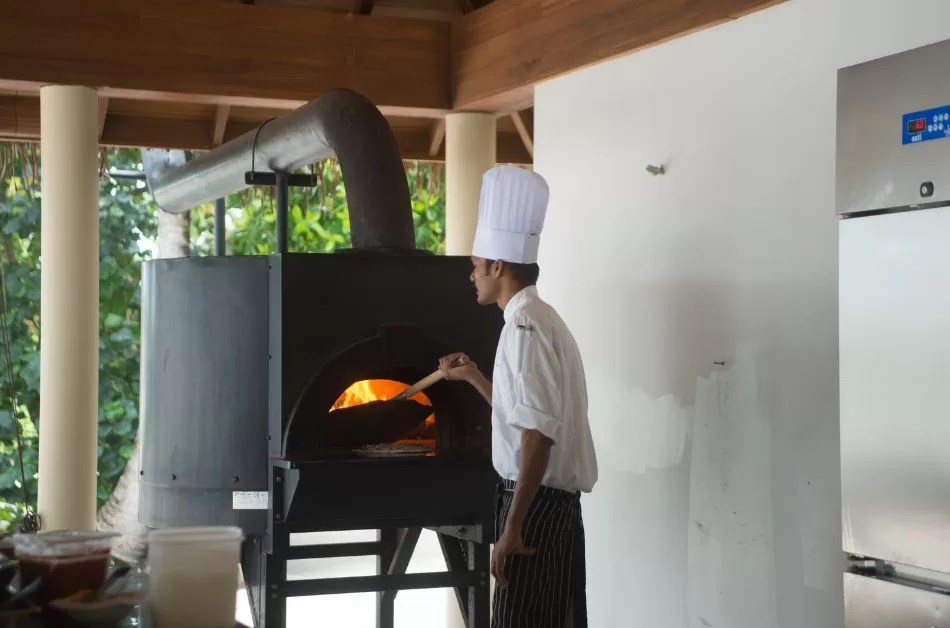
The Impact of Poor Maintenance
Neglecting routine oven maintenance can lead to soot buildup, uneven curing, and compromised cooking performance.
Essential Cleaning and Care Practices
- Regular Cleaning: Remove ashes, soot, and leftover food debris after each use to prevent buildup and ensure efficient heat distribution.
- Seasoning the Oven: Periodically season your oven to enhance its performance and protect it from wear and tear.
Seasoning the Oven
- Prepare the Oven: Make sure the oven is completely dry and free from any debris.
- Apply Cooking Oil: Coat the interior surfaces with a thin layer of cooking oil, using a brush or cloth.
- Slow Heating: Gradually increase the oven temperature over several hours, allowing the oil to penetrate and seal the surfaces.
Final Thoughts
Congratulations on acquiring the knowledge to avoid common mistakes when cooking with a wood-fired oven and elevate your skills.
By sidestepping errors like improper preheating, wrong wood usage, oven overloading, temperature neglect, and poor maintenance, you’ll achieve perfect wood-fired dishes every time.
Cooking with a wood-fired oven offers a delightful experience, savoring smoky flavors and impressing friends and family. Though mastering this art takes time and practice, you’ll soon become a wood-fired pizza pro!
Explore top wood-fired pizza ovens and discover the Westinghouse Pizza Oven for indoor cooking with wood-fired flavor.
Subscribe to our newsletter for cooking tips, recipes, and exclusive offers. Embrace the joy of wood-fired cooking, create artisan-made pizzas, and relish the unique smoky flavors. Avoid mistakes, ignite your oven, and leave guests craving more.
Thank you for joining this wood-fired oven adventure.
Happy cooking, may your pizzas always boast a perfectly crispy crust and gooey cheese!
Sources:
Frequently Asked Questions
No, it is essential to use dry, seasoned hardwoods like oak, cherry, or apple wood. Avoid softwoods and treated woods, as they can produce unpleasant flavors and harmful chemicals.
The preheating time can vary depending on the size and type of your oven. Generally, it takes between 30 minutes to an hour for the oven to reach the desired temperature.
To prevent sticking, make sure the oven floor is clean and lightly floured. Additionally, use a pizza peel to maneuver the pizza easily.
Absolutely! Wood-fired ovens are versatile and can be used to bake bread, roast vegetables, cook meat dishes, and even prepare desserts like cookies and cakes.
Regular cleaning after each use is crucial to prevent soot buildup and ensure the oven’s optimal performance. Additionally, season your oven every few months to maintain its efficiency.

Ethan Davis, a culinary arts graduate with a deep passion for pizza, is an esteemed author in the field. With a wealth of professional experience in diverse pizza restaurants, Ethan has honed his skills and expertise in the art of pizza making. His mission is to share his extensive knowledge with a wider audience, captivating them through engaging articles that showcase his profound understanding and unwavering enthusiasm for the subject. Through his writing, Ethan aims to inspire pizza enthusiasts worldwide, fostering a greater appreciation for the craft and encouraging others to explore the delicious world of pizza.

